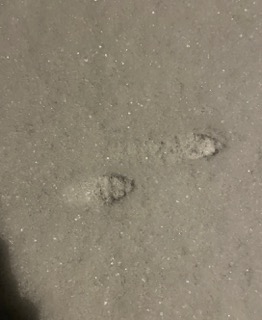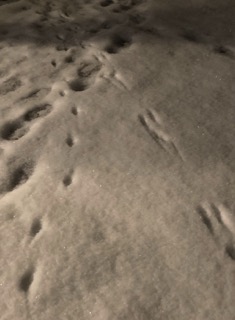Community Fox Forum
Lucas Drummond
»~~~~~~~~~~~~~~~~~~~~~~~~~~~~~~~~~~~~~~«
(he, him). Living in so-called Denver, Colorado
Lets keep in touch! Come doodle on my server!
»~~~~~~~~~~~~~~~~~~~~~~~~~~~~~~~~~~~~~~«
#Webserver
# Readings & Thoughts
This class has challenged a lot of my previous value judgements for tech. Specifically inspiring has been Diana Nucera's "Digital Justice Principles” of Participation (Teaching Community Technology) which has felt like a recurring central theme*.* It brings up important questions not just regarding who tech is for, but also who plays a role in creating, defining, maintaining tech, producing content, deciding what infrastructure is needed, removing infrastructure that no longer serves them.
Some quotes from the readings:
-
Ursula K. LeGuin, A “Rant” About Technology
“Technology is the active human interface with the material world.”
-
(Mark Anthony HM?) "to depend on each other is to become infrastructure"
-
Ahmed Ansari, Decolonizing Design Through the Perspectives of Cosmological Others.
“Should an extremely privileged minority be designing for the needs of an underprivileged majority?”
-
Tega Brain, Alex Nathanson, Benedetta Piantella. Solar Protocol: Exploring Energy-Centered Design
“By automating decisions according to environmental dynamics, the project explores a kind of "natural" intelligence rather than artificial intelligence”
-
Lori Emerson, Reclaiming the Future with Old Media
“Six (Difficult and Inconvenient) Values to Reclaim the Future with Old Media: Slow, Small, Open, Cooperative, Care, Failure”
-
Diana Nucera, Teaching Community Technology Handbook
“Physical neighborhoods don’t exist on the internet, but all the ways in which technology intersects with our lives create a digital ecosystem. In some instances, people who are neighbors can also create a digital community or neighborhood by building it together and sharing ownership over it."
-
Feral.earth
-
Feral.altas

Other re-framings brought up in the class:
-
Who has a right to moderate or be moderated?
-
Un-PCs (not so personal computers) Janastu?
-
Internet as a space that reflects our various sources of knowledge
-
Create systems that emphasize quality of interaction over quantity
-
The server is not the center
#Class Project (in progress)
Exploratory creation of a fox forum; a locally hosted community web forum celebrating/exploring/becoming the hidden animal infrastructure of the neighborhood.
The project was first inspired by our class infrastructure walks; seeing the hidden internet infrastructure reminded of walks I took this winter, at night after snowstorms. The fresh snow showed animal footprints, revealing the elaborate dance foxes, rabbits, mice, owls and cats moving through the neighborhood. This got me thinking about spatial and temporal layers of infrastructure in a place that seems so familiar.



Fox Technology
After our conversations on technological imagination, and reading Anna Tsings' writing on human /more-than-human assemblages, I considered what red fox technology meant in my neighborhood. What forms of "interspecies pedagogy" (as Alice mentioned) could happen if we bridge the layers between our patterns of spatial being and our local ecology.

Red foxes are one of the most widespread species globally, are resilient yet highly adaptable thriving in both sparsely populated and densely urban environments, shifting to match the ecological niches created by humans; and especially thriving along the margins. Urban ecosystems provide examples of what Anna Tsing describes as “species interdependence” in the article Unruly Edges. Tsing poses the question: “What if we imagined a human nature that shifted historically together with varied webs of interspecies dependence?”
Also considering the pragmatic view presented in Pigeons, Gaza and Internet Access of the “pigeon paradox” — “that conservation depends on people's direct experiences with urban nature.”

Interaction vs Stewardship vs Surveillance & Disruption
I had conversations with Helen Shewolfe Tseng (who is a naturalist trained in observing coyote populations) about foxes and coyotes, stewardship vs surveillance, and a community composed of human and non-human members. We discussed the benefits/challenges of encouraging an interest in local wildlife while respecting animal boundaries, and about not disrupting the role they play in the ecosystem. We were both drawn to the idea of a website that approaches ecological participation poetically.
This made me think of the rosa feminist server project from Hypha, and wondering if there were ways to approach stewardship through care; to build community around care for human and non/human members, and to start discussions of boundaries, consent and shared space.
For hypha the practices developed around rosa made it clear that rosa is a feminist server not because of any specific technology or tool, but because of how we engaged with each other, how rosa gave us a common space. This common space was rooted in feminist ways of thinking and theorizing about the world. This involves the idea of care — to have something together that we — the people around rosa — can take care of, and in doing this, we create occasions to reinforce our community, to know each other better, to know about the space and how to use it. Examples of this care include paying attention to issues around consent and understanding what we are each comfortable giving and receiving. It’s like a house: what’s important is how we’re collectively deciding to live in it, not the house itself. Because of this, hypha didn't want to focus their chapter on providing technical knowledge to others to self host, but on hanging out together, learning to share this space, and figuring out how we want to use it. It's a space to collectively take care of; we’re not focusing on the tech but on the community it gives space to.
Damaged Earth Catalog/ Ecofeminist and Always Unfinished Space Making

Progress
I made a start on building and self-hosting a forum, but ran into issues when deploying to Yunohost.
-
Wanted the site to emphasize locality (similar to feral.earth). The site displays the season, sun and moon phase at the location of the server.
-
Hoping to draw parallels between the locality of the server and server networks, and the movement patterns and spatial networks of fox territory. Sun, moon and season suggest fox behavior patterns.
-
Thinking about prompts vs moderation; how guiding discussions in the forum based on a set of prompts for infrastructure walks, auditory experiments etc. could lead to better content.
-
TODO: Figure out how to set up NGINX reverse proxy to point at server app.
Ongoing Goals
-
Finish the forum
-
Advertise around the community and adapt to responses
-
See if anyone would be interested in community maintenance or growth of the project
-
Use the forum to discuss questions of human / non-human boundaries, respect and stewardship, and moderation.
Feel free to comment any thoughts!!!